
In the summer months, Delia says her tap water comes out brown — and at times there's no water at all. "You can't flush the toilet, you can't do laundry, and if you do, the clothes come out brown and dirty-looking."
Mette Lampcov for BuzzFeed News
In 2012, California Gov. Jerry Brown signed a bill that made the state the first in the nation to formally recognize access to safe, clean, and affordable water as a human right. Yet California's Central Valley, the country's hub for agriculture, has been plagued for years by water that is too toxic and dirty to drink, cook with, or bathe in. And while state and local officials have been long aware of the problem, they’ve been unable to put in place a permanent solution, much to the frustration of residents.
It's estimated that there are hundreds of thousands of families in the Central Valley, a large percentage of them minority farmworkers living below the poverty level, whose household water contains toxins. From town to town, residents are told their water may include cancer-causing arsenic and uranium, organ-damaging disinfectant by-products (DBPs), which also increase the risk of cancer, and nitrates, which cause serious health issues for infants. In total, over 300 water systems carry contaminated water into homes and schools, according to California’s Water Resources Control Board. The majority of the pollutants can be traced back to the factory farms that dominate the valley. Photographer Mette Lampcov visited the hard-hit, unincorporated towns of Cantua Creek, Three Rocks, and Seville, all of which rely on contaminated aquifers, to shine a light on the dangers and difficulties faced by residents living with unsafe water.

Margo serves her husband, Antonio, bottled water with his meal.
Mette Lampcov for BuzzFeed News
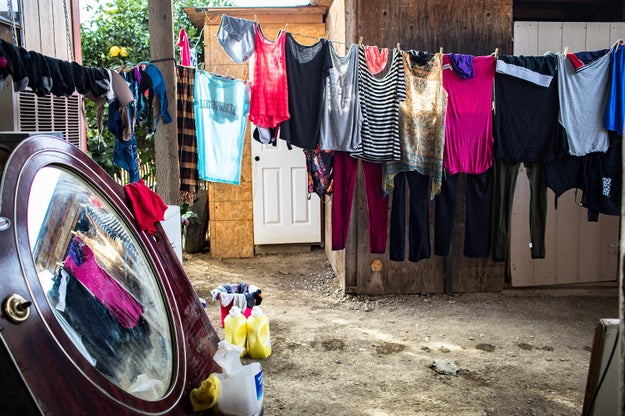
Laundry washed in contaminated water hangs to dry.
Mette Lampcov for BuzzFeed News
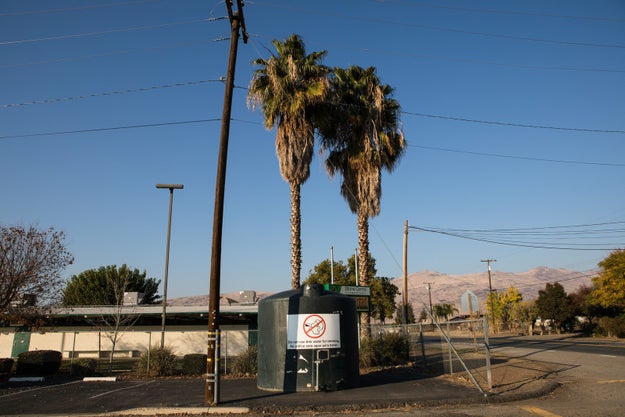
A water container in Seville bears a warning about the quality of its contents.
Mette Lampcov for BuzzFeed News
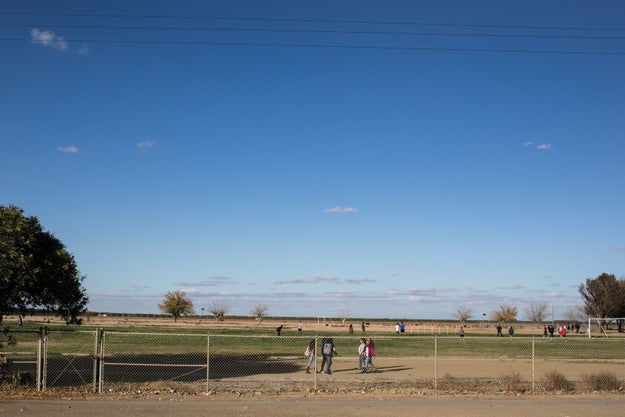
Students at the Cantua Creek Elementary School in San Joaquin Valley, where the school receives bottled water for use in the classrooms. The school's water has the same contaminated water that residents are told to avoid.
Mette Lampcov for BuzzFeed News
According to data on the California Water Board’s website, the contamination of the water in Cantua Creek and Three Rocks is due largely to DBPs. These towns lack the funding necessary to build and continuously operate water treatment facilities.
Low-income farmworkers moved to these unincorporated towns because of the lower tax rate and their proximity to the farms where they work; of the 525 “poor, densely populated … communities” in the San Joaquin Valley, 65% of the population of 310,000 are people of color and 64% are low income, according to CityLab’s review of a 2015 report published by the California nonprofit PolicyLink. It's a paradox: These farmworkers, who are entrusted with producing the food that ends up on most American dinner tables, don't have the means to live in communities with access to safer water.
In 2015, the nonprofit California Rural Legal Assistance secured a state grant to cover the cost of bottled water deliveries to residents as a stopgap measure in Cantua Creek and El Porvenir, two Central Valley towns. Each month, residents receive bottled water from the water delivery service Sparkletts to make up for the dirty water flowing through their pipes — dirty water for which they still receive a utility bill. In towns where there is no subsidy, residents must pay for bottled water out of their own pockets; that means the contaminated tap water from their wells is often still used for water-intensive tasks like bathing and doing laundry. The subsidy, if not renewed, is scheduled to run out in June this year.
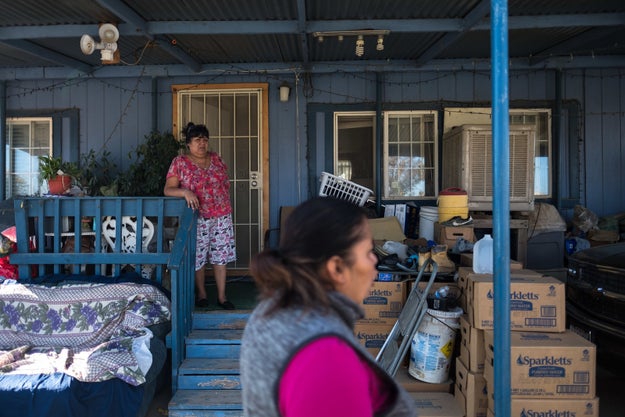
Blanca on the porch of her Cantua Creek home, where Sparkletts water boxes are stored after a recent water delivery. Blanca's family of five receives an allotment of 78 gallons of bottled water each month.
Mette Lampcov for BuzzFeed News
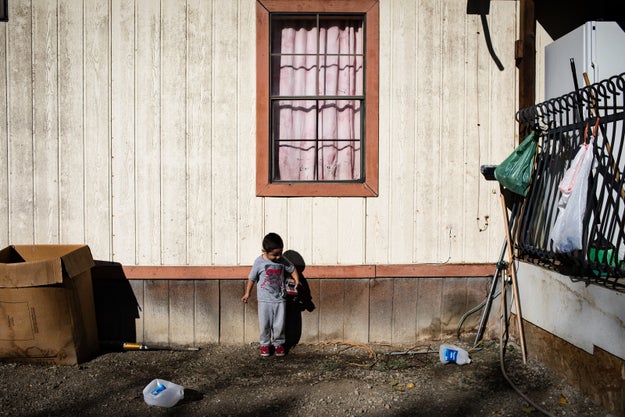
Cesar, age 3, plays outside his home in Cantua Creek.
Mette Lampcov for BuzzFeed News
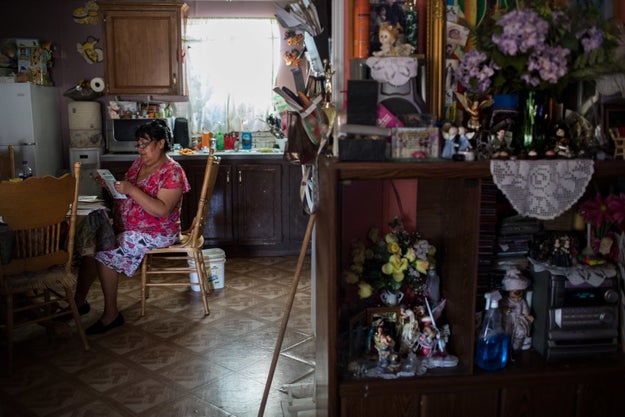
Blanca reviews her monthly $182.73 utility bill. A large part of that cost is for water that she and her family cannot drink or cook with safely.
Mette Lampcov for BuzzFeed News
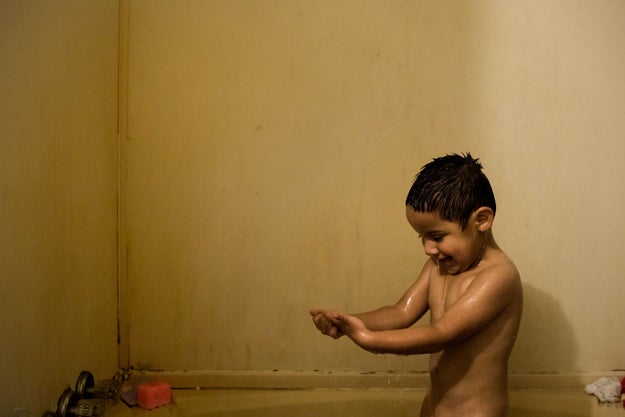
Cesar plays in the bath. His mother Carolina says she "does not have a choice" but to use tap water for his baths.
Mette Lampcov for BuzzFeed News
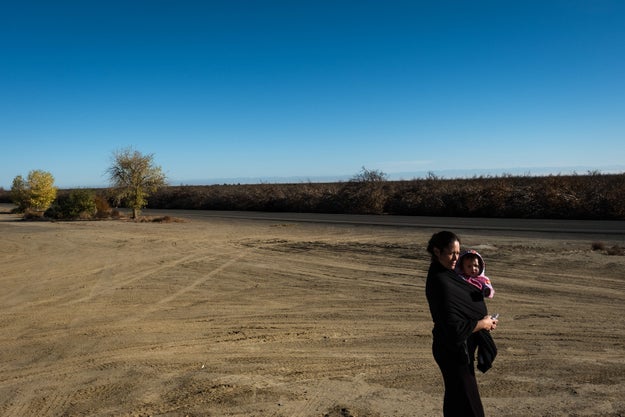
Before the bottled water delivery program was approved for the rural town of Three Rocks, families had to travel miles outside of their town for bulk drinking water and supplies.
Mette Lampcov for BuzzFeed News
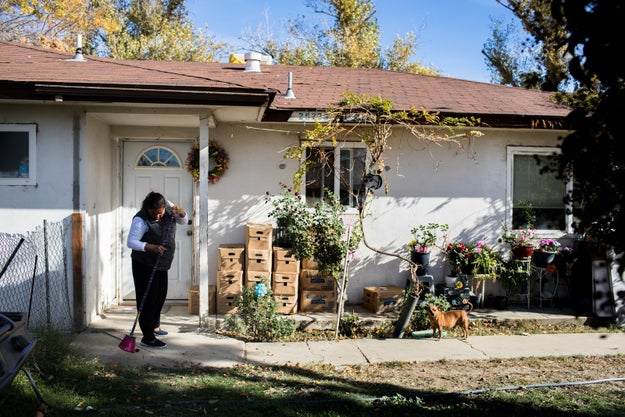
Margo stores her monthly allotment of bottled water outside her home in Cantua Creek.
Mette Lampcov for BuzzFeed News
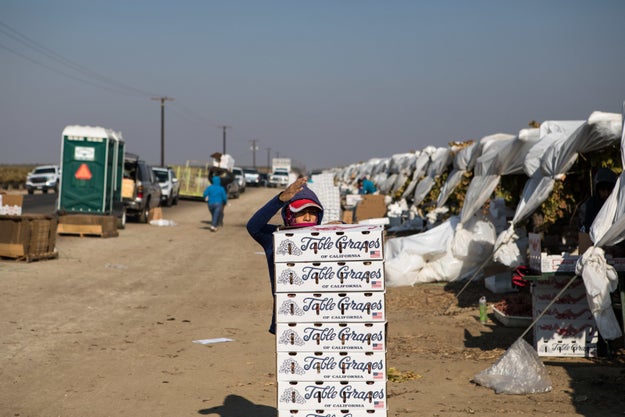
Farmworkers picking and packing grapes. Many of the people who produce the food that ends up on our plates live in poverty and often face health risks due to the toxic agricultural by-products making their way into the water supply.
Mette Lampcov for BuzzFeed News
California is the country's largest agricultural producer, according to the last completed census in 2012, which also reported that two Central Valley counties reached agricultural sales of over $6 billion. The state also accounts for a fifth of the nation's dairy production. All of this abundant agricultural and factory farming has taken its toll, leaving behind dangerously high levels of nitrates in the groundwater, which Community Water Center, a nonprofit clean-water advocacy group in the San Joaquin Valley, attributes to "50 years of unchecked use of commercial fertilizers, unregulated and unprotected storage and disposal of animal wastes, and septic systems."
Meanwhile, the severe drought that has continued to plague the landscape compounds the state’s compromised water situation. As highly water-dependent crops such as almonds and pistachios have risen in popularity, farmers have rushed to grow them. And without proper regulations for water sourcing, many farms have invested in drilling deeper wells that are significantly bigger than those that serve the average family or individual resident, causing them to concentrate any contaminants present in the groundwater and, in some cases, dry up completely. In 2014, Gov. Brown signed a law to regulate the speed at which aquifers can be pumped dry. Unfortunately, the law doesn't take effect until 2040, and in 2015 farmers dug more wells in the Central Valley than during any other year on record. The depth and speed with which farmers have been pumping the Central Valley dry of its groundwater in the last five years have also caused large parts of the valley to sink, causing billions of dollars in damage and problems for bridges, tunnels, and canals.
However, there’s reason to believe that cleaner water is on the horizon for the beleaguered area: Last year, State Sen. Bill Monning introduced the Safe and Affordable Drinking Water Fund bill, which proposes adding a tax of less than $1 to water utility bills for all California residents to ensure the safety of water for its most vulnerable population. The tax, which is the state’s first for a water bill, may be the only sustainable solution. Images like Lampcov’s help keep the focus on just what’s at stake.
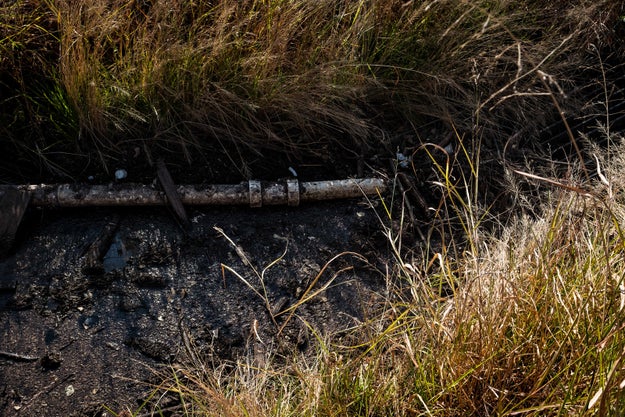
A water pipe running through open sludge in Seville. "Sometimes it breaks open and we have to go put it back together," says former Seville resident Beck Quintana.
Mette Lampcov for BuzzFeed News
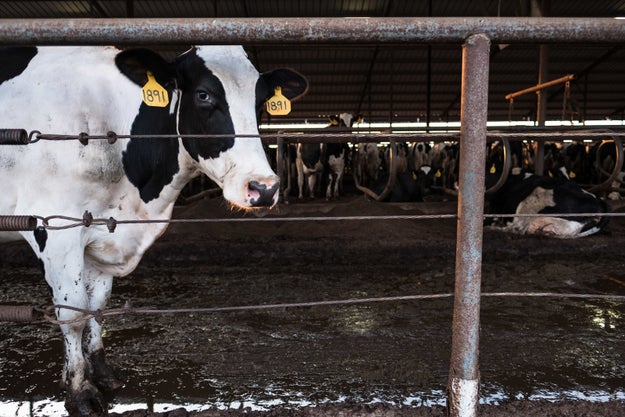
Runoff from dairy farms and other agricultural activities, like irrigation with a mixture of water and nitrates, seeps into the aquifers, elevating nitrogen levels in the water.
Mette Lampcov for BuzzFeed News

A farmworker picks oranges. Agricultural businesses in the Central Valley have been pouring fertilizer on their crops for decades, which has been seeping into the water supply.
Mette Lampcov for BuzzFeed News

When Simona's well went bad, she did not have access to water for two years. She finally took out a loan for $23,500 to make a new well, and she worries that she can't pay it back. She still spends $170 to $190 a month on bottled water out of concern that the water in her new well is contaminated.
Mette Lampcov for BuzzFeed News
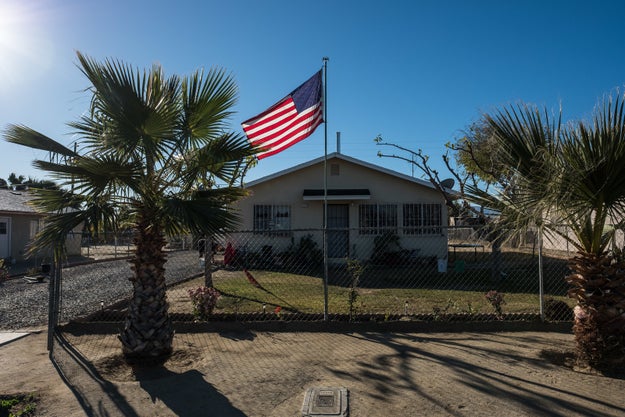
A family home in the town of Three Rocks. Areas of the valley are experiencing significant subsidence, or sinking, due to the overpumping of groundwater out of aquifers by farms.
Mette Lampcov for BuzzFeed News
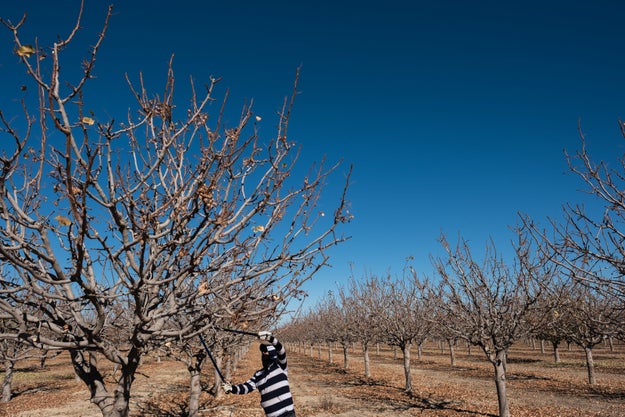
A farmworker prunes a pistachio tree. In the past few years, farms in the San Joaquin Valley have converted to more profitable crops such as almonds and pistachios, even though they are water-intensive crops.
Mette Lampcov for BuzzFeed News
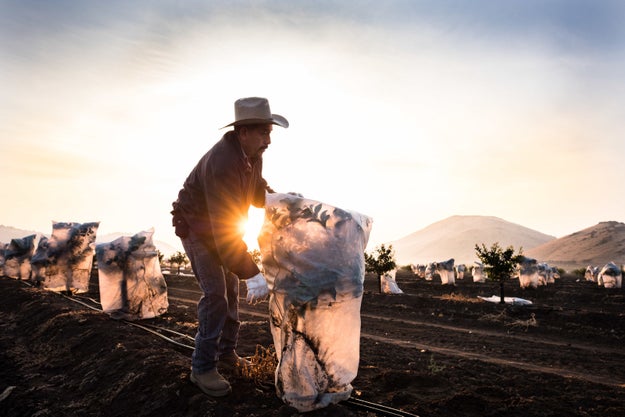
A farmworker covers young lemon trees to protect them from the cold.
Mette Lampcov for BuzzFeed News

The California Aqueduct passes by Cantua Creek and Three Rocks. It carries water collected from the Sierra Nevada mountains and valleys of Northern and Central California through the San Joaquin Valley to Southern California, where it's made safe and clean for Southern California homes.
Mette Lampcov for BuzzFeed News
from BuzzFeed - USNews http://ift.tt/2slCZ1O
No comments:
Post a Comment